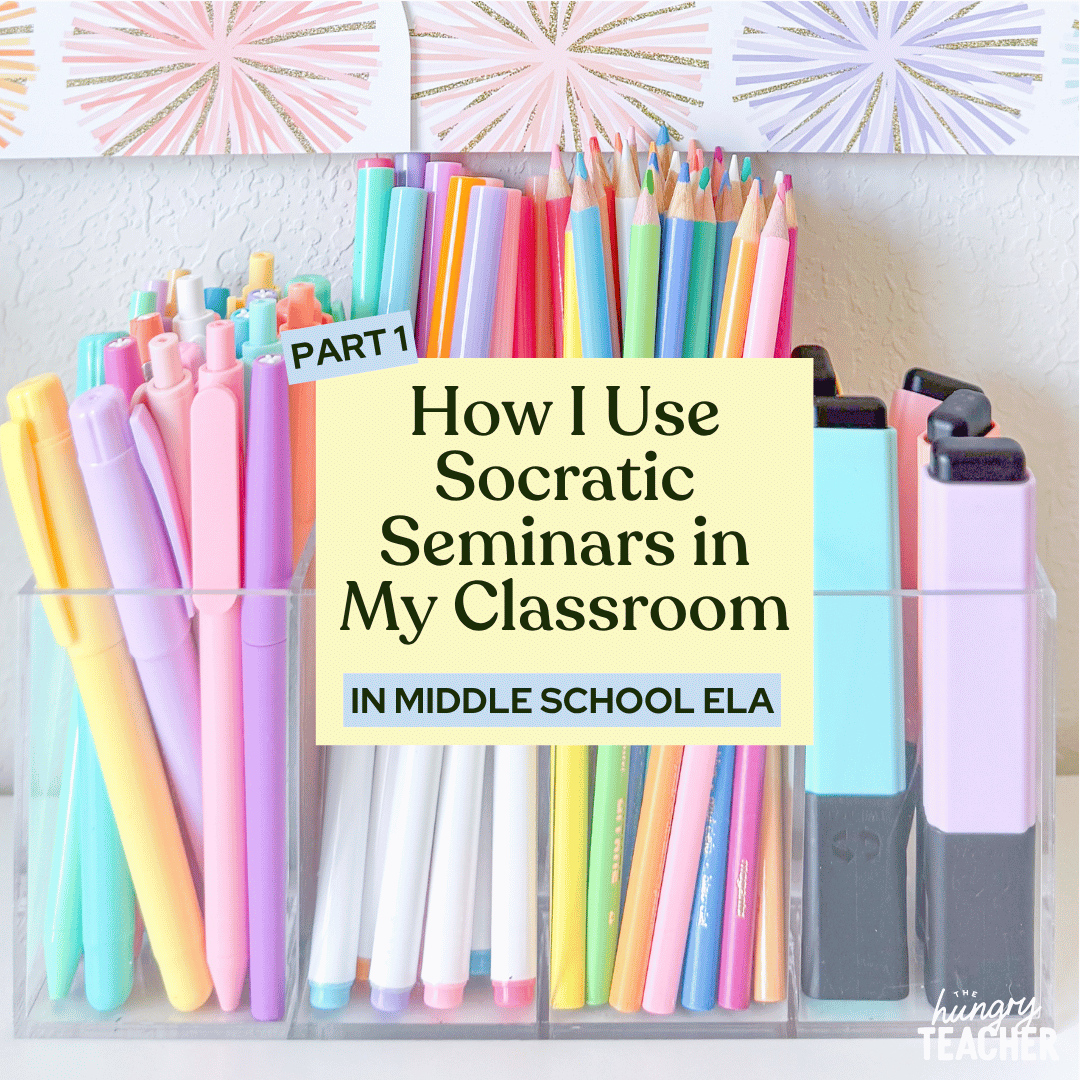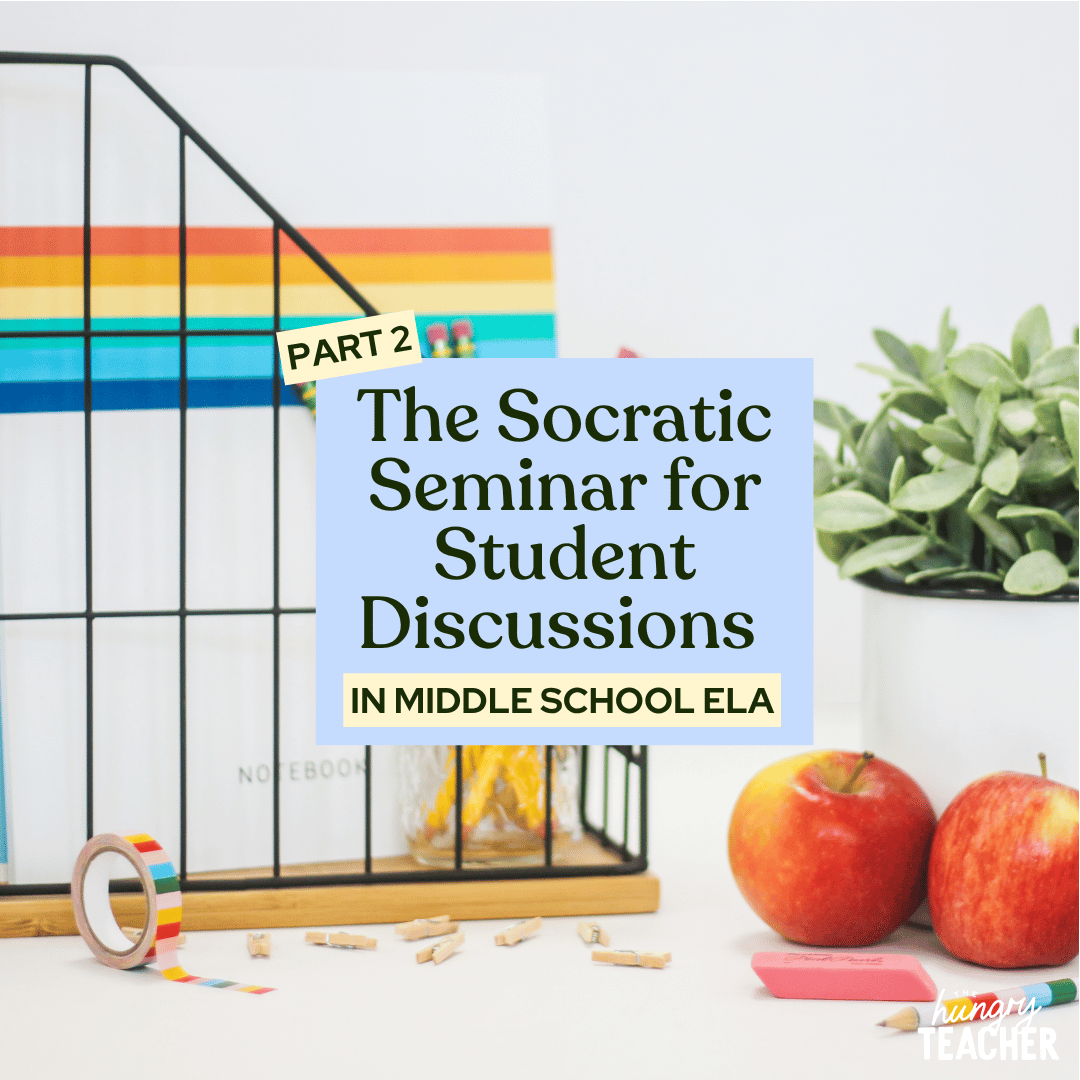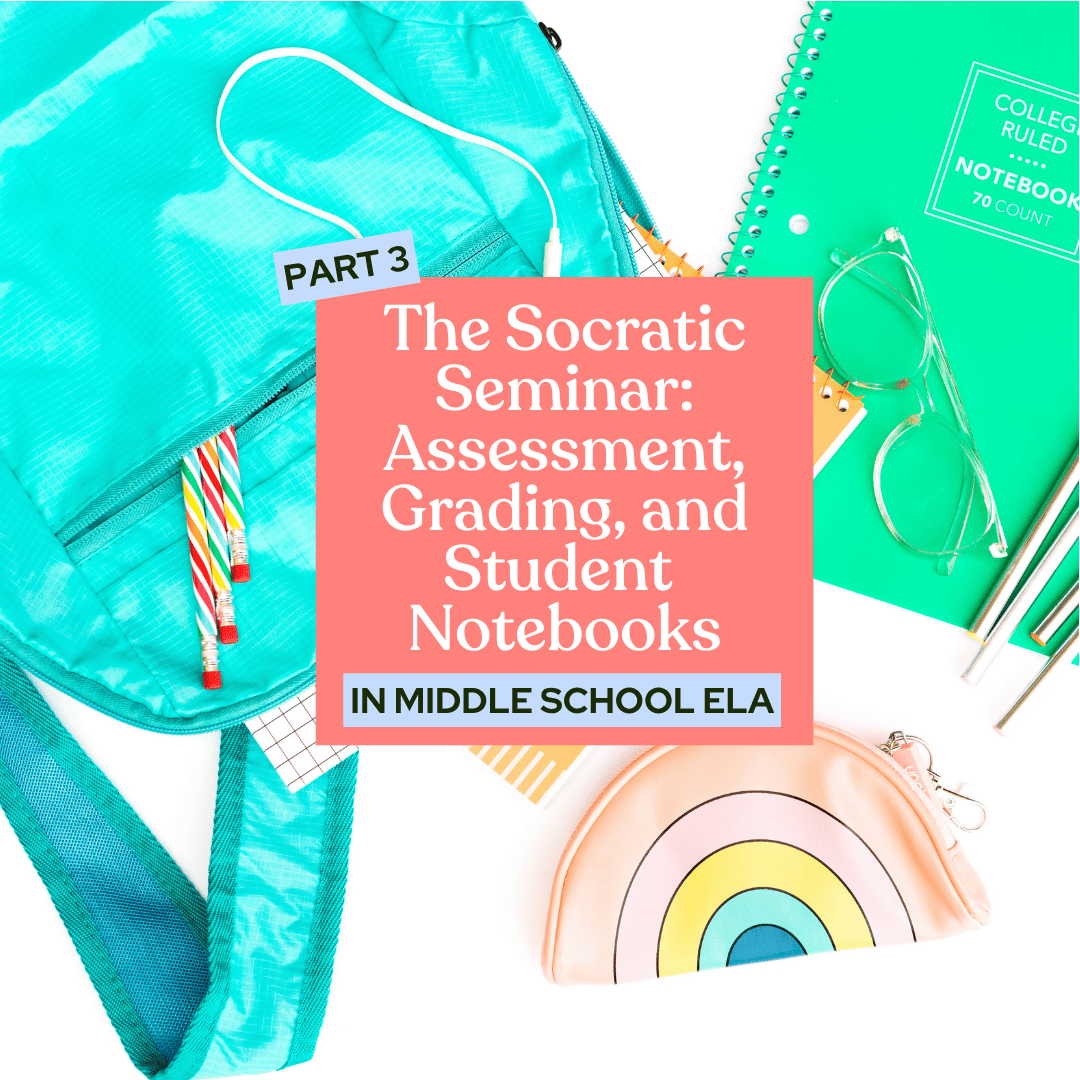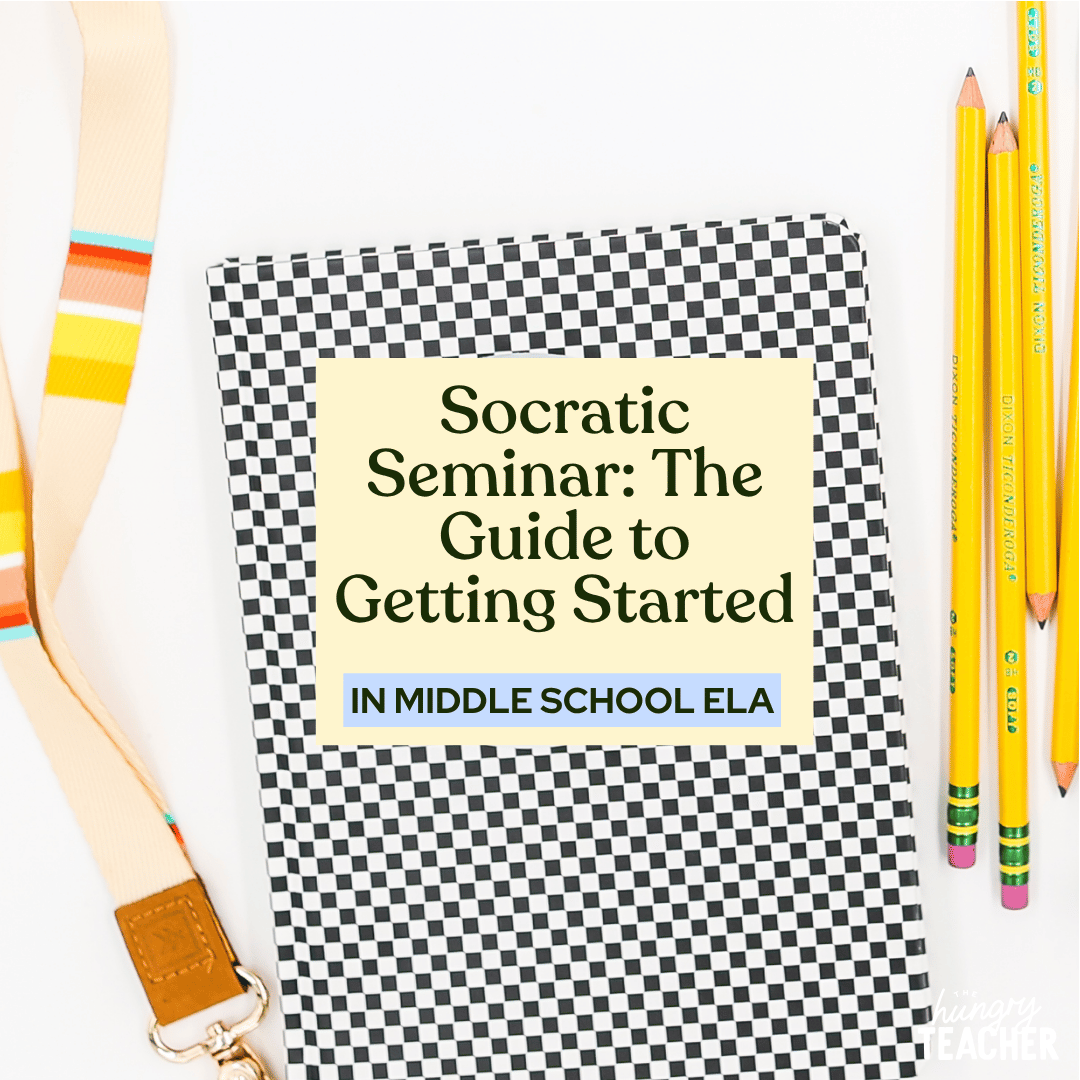hey friend!
I'm Martina.
I provide practical, time-saving strategies that actually work—so you can engage your students, teach effectively, and reclaim your time from the exhausting planning-grading cycle.
Browse Our ELA Resources
Middle School Reading ELA Common Core Standards with Engaging Novels and the Socratic Seminar
Teach the Middle School Reading Literature and Informational CCSS Standards with Engaging Novels
When I first wrote this post, I had just finished my first year of teaching fifth grade and was heading into my second. At that time, I only made reading units for fifth grade.
Fast-forward a few years—and a few hundred coffee-fueled lesson plans later—and I’ve since created reading units for grades 6–8 too. These units are not your typical “novel studies.” They’re designed to help students think critically, discuss deeply, and write meaningfully through the use of the Socratic Seminar model.
How These Reading Units Stay True to My Values
Let’s get one thing straight:
I believe in teaching kids, not books.
The novels are simply the tools I use to teach students how to think, question, discuss, and grow as readers and writers.
These aren’t “fill-in-the-blank” novel studies. They’re reading units built around authentic learning.
I want my students to:
Fall in love with reading.
Go home and tell their parents about the book we’re reading and the one they picked up on their own.
Leave my classroom as lifelong readers — not just kids who can read.
The goal isn’t to memorize plot points or pass quizzes.
The goal is to build readers who think critically and discuss confidently — through meaningful conversations guided by the Middle School Socratic Seminar model.
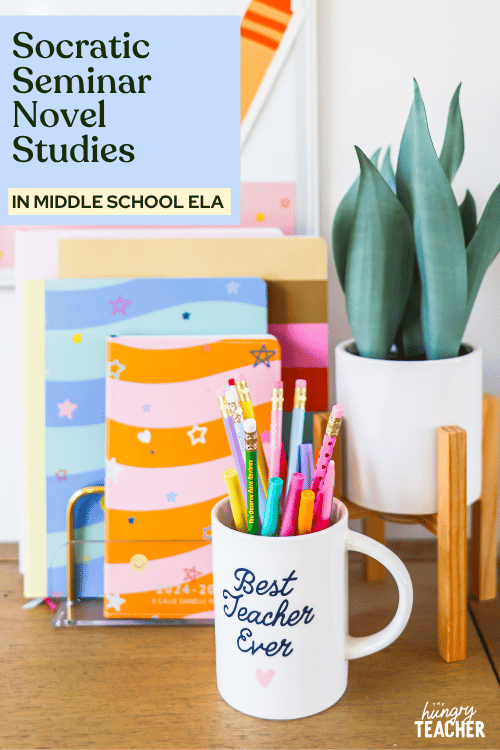
How These Units Are Different
These reading units were designed to make your reading block the most purposeful part of your day. Here’s how:
You and your students will read and discuss 6–10 novels across genres throughout the school year.
You’ll start with the Literature Unit, where students build their interactive notebooks and learn foundational literary terms like theme, tone, figurative language, character development, and inference.
Students use these notebooks as a reference throughout the year—essentially creating their own “mini textbooks.”
You’ll see immediate growth in vocabulary, engagement, and classroom community.
You’ll dig deeply into every single reading and writing standard, every single week.
You’ll have flexibility to choose the novels you want to teach with—no more being locked into one text all quarter.
You’ll teach with actual novels, but the focus stays on the students and skills, not the book itself.
The Foundation: Literacy Studio + Socratic Seminars
The foundation of these reading units comes from my second year teaching fifth grade.
That year, I had an incredible teaching partner who introduced me to The Literacy Studio, and everything changed. I began designing resources (not just products) that aligned with what I believed about reading instruction:
that students learn best through talking, questioning, and authentic discussion.
The Socratic Seminar became the anchor.
Each unit revolves around guiding and interpretive questions that encourage students to think beyond the text and discuss ideas collaboratively.
It’s not about “covering” the novel—it’s about uncovering meaning through it.
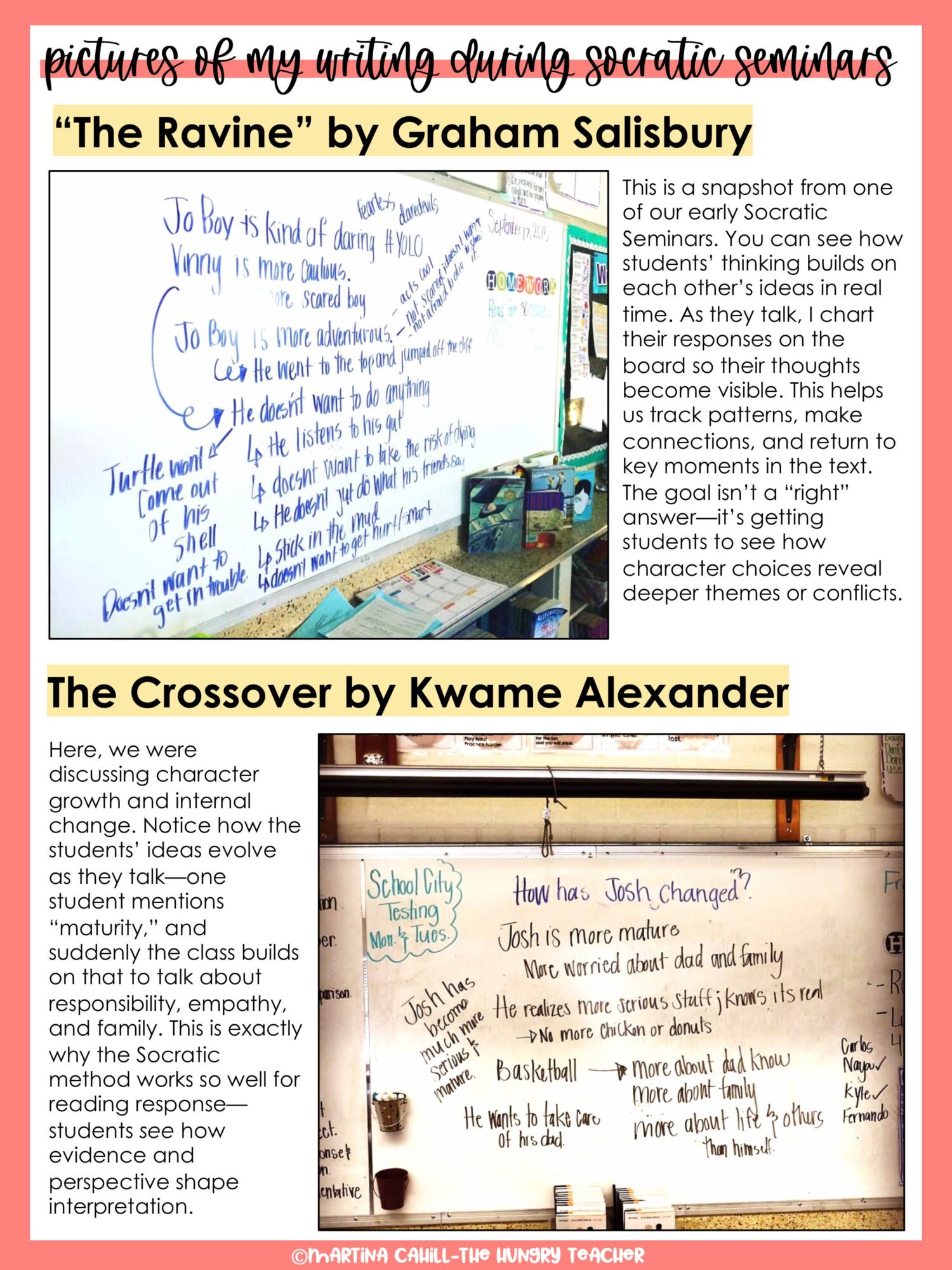
What It Looks Like in the Classroom
A typical day in my ELA class looks like this:
We start with a hook or guiding question to get students thinking.
We read the novel together (I always read aloud—it keeps the pace and engagement high).
We pause to discuss key ideas, clarify vocabulary, and make inferences.
Students write a quick response to the guiding question in their reading notebooks.
Then, we hold a Socratic Seminar discussion around an interpretive question that pushes their thinking further.
Finally, students revise or expand their original responses using ideas from the discussion.
I never had to “teach to the test” or spend time on dull test prep. My students were always ready—because they were reading, writing, and thinking every single day.
Even better? My “not-yet readers” became readers.
Because the novels we read were meaningful, relevant, and fun.
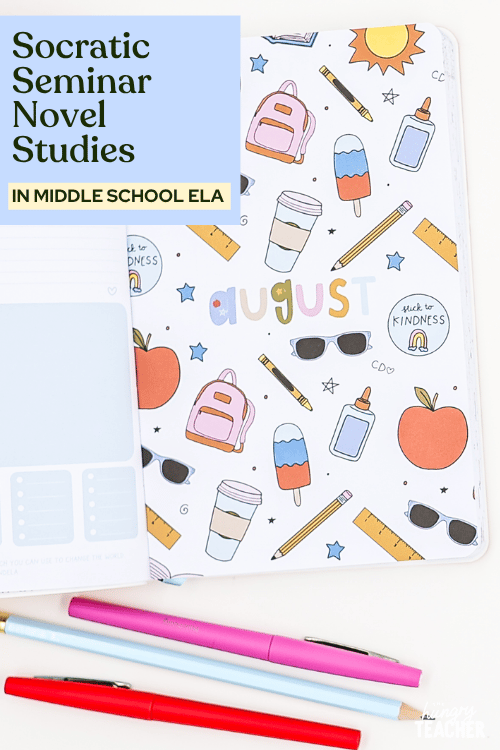
What Does a Daily Schedule Look Like?
Every teacher’s schedule looks different, but my 50–65 minute class periods followed a consistent rhythm.
Here’s the breakdown:
5 minutes: Hook or guiding question
15–20 minutes: Read aloud (I read to them, they follow along)
5 minutes: Quick write in notebooks
10–15 minutes: Socratic Seminar or discussion
10–15 minutes: Reading response revision or independent reading
Even with short periods, this structure ensures students are constantly reading, thinking, and writing.
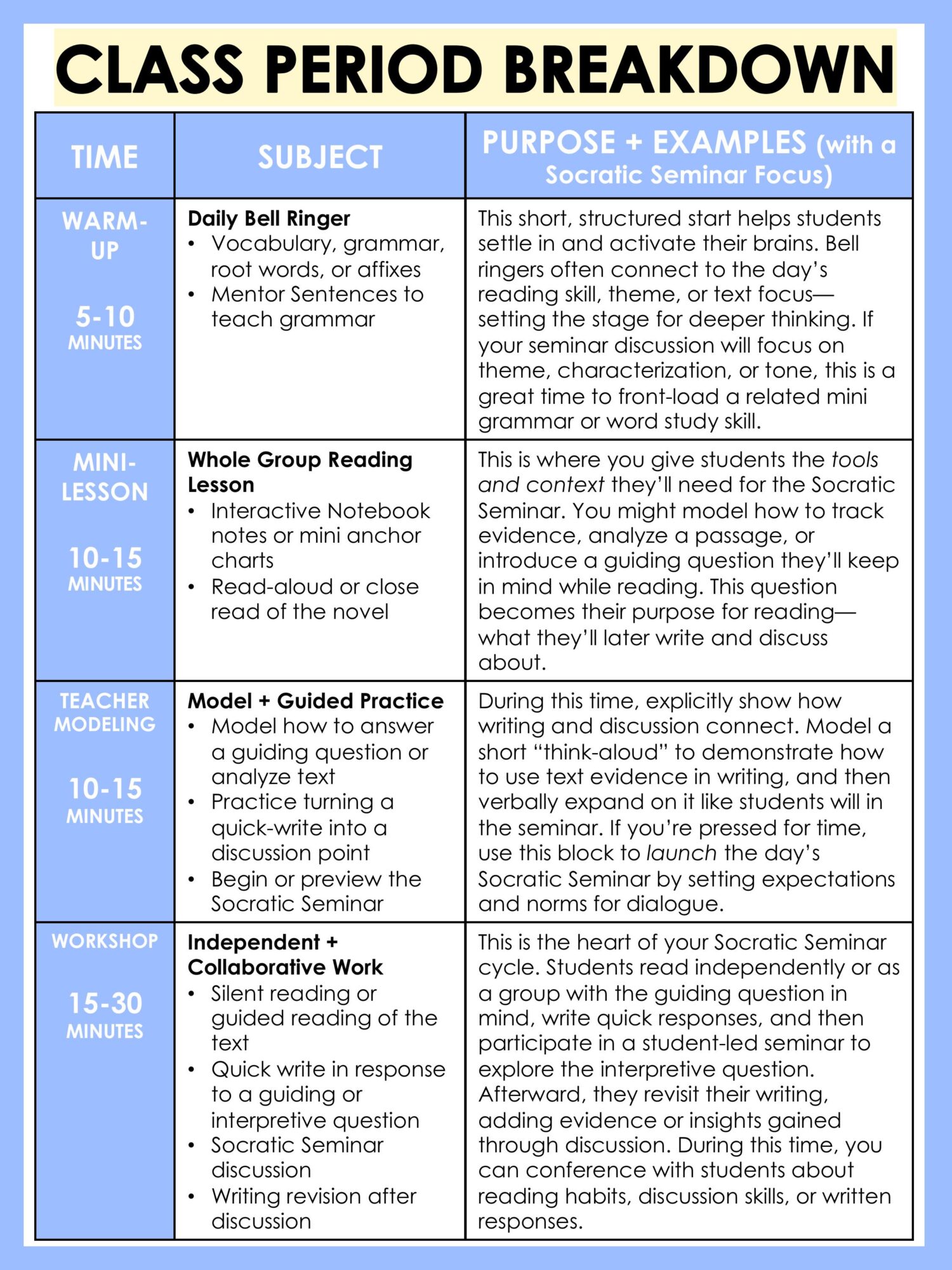
What Does a Daily Lesson Plan Look Like?
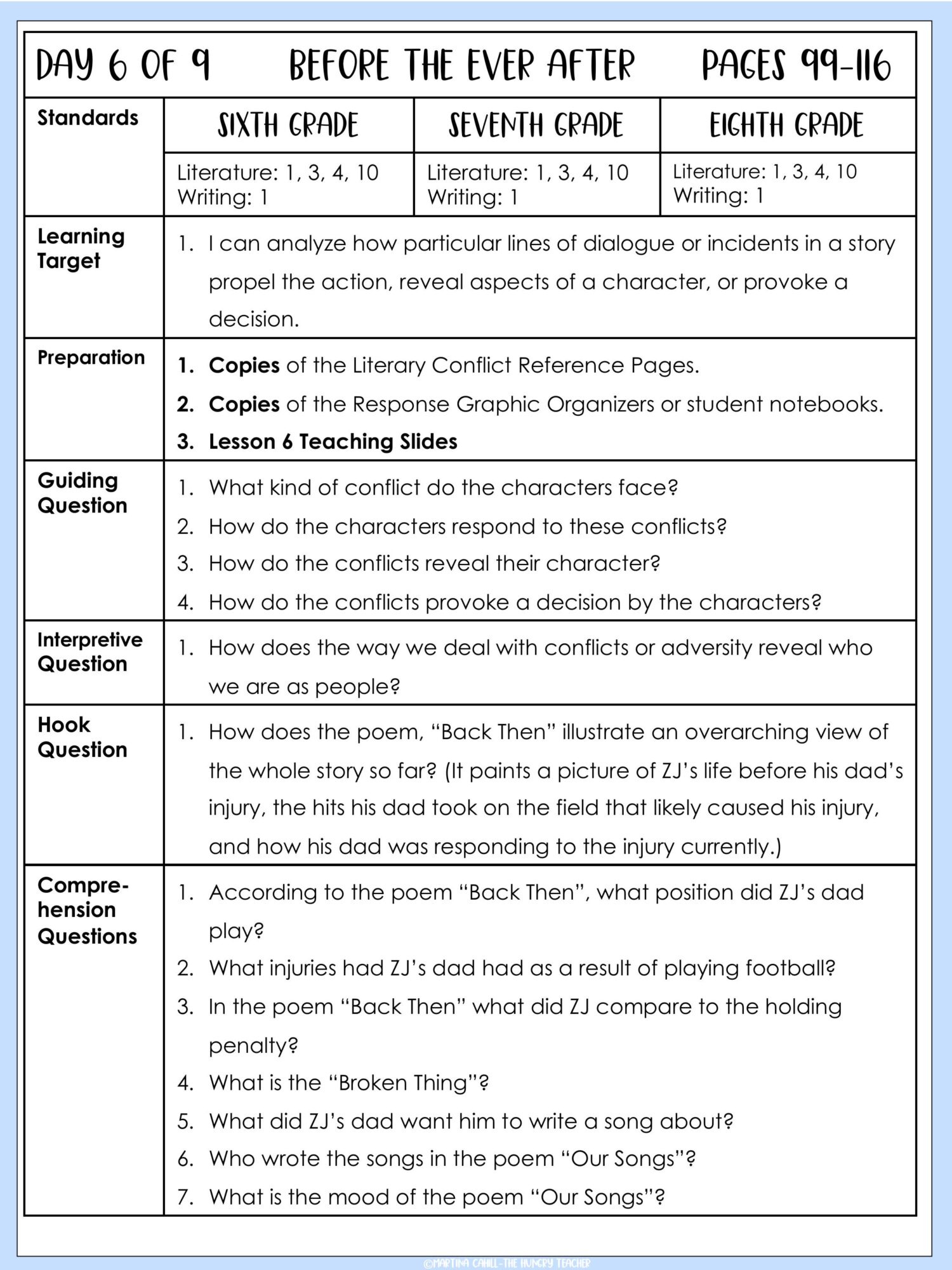
Are There Assessments?
Yes — but not in the way you might expect.
We are not testing them on plot details or comprehension quizzes.
We’re assessing:
Conceptual understanding
Depth of analysis
Growth as readers and writers
Mastery of standards over time
Each unit includes 8 different rubrics, though I typically use the mixed rubric that assesses reading, writing, and language skills together.
I collect reading notebooks every week or two and assess 5–8 responses at a time. It’s quick, authentic, and aligned to what we value most—student thinking.
Student Reading Responses
Over the years, I’ve seen incredible student growth through these reading responses.
They move from simple summaries to thoughtful literary analysis—citing evidence, exploring author’s craft, and connecting ideas.
Even my reluctant writers start taking pride in their work once they see their classmates’ ideas come to life in discussion.
Major Updates to the Units
These units have come a long way since 2015.
Here’s what’s new:
- Digital Interactive Google Slides Literature Notebook Lessons
- Suggested comprehension answers for every question
- Teacher vocabulary suggestions with definitions
- Display slides (PowerPoint, PDF, and JPEG) for all guiding and interpretive questions
- Digital student reading response notebooks
- Editable PowerPoint + Google Slides rubrics
- Small group and conference forms for teachers
- Streamlined lesson plans and separate CCSS alignment file for quick reference
Every update was made with real teachers (and real classroom time limits) in mind.
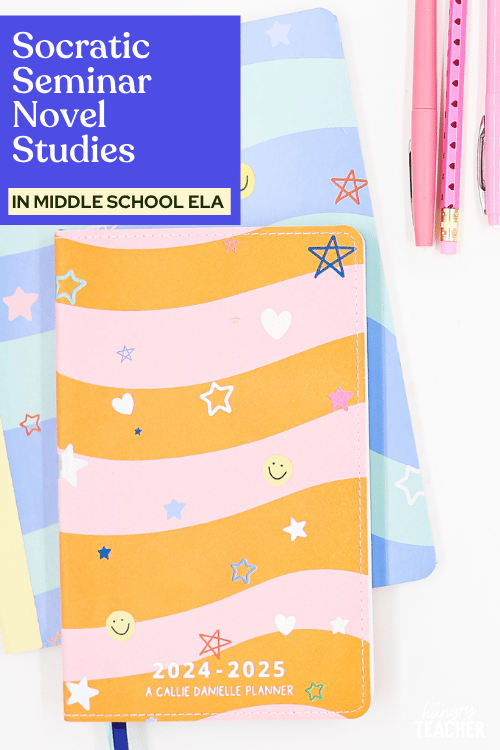
What Are the Options for These Units?
You can purchase individual novel units or choose from several bundle options.
Individual Units Include:
- Freak the Mighty by Rodman Philbrick Updated 2022
- The Outsiders by S.E. Hinton Updated 2022
- Ghost by Jason Reynolds Updated 2022
- Restart by Gordon Korman Updated 2022
- Ungifted by Gordan Korman to be updated 2023
- Wonder by R.J. Palacio to be updated 2023
- The Maze Runner by James Dashner Updated 2022
- The Giver by Lois Lowry Updated 2022
- Among the Hidden by Margaret Peterson Haddix Updated 2022
- A Long Walk to Water by Linda Sue Park Updated 2022
- Fever 1793 by Laurie Halse Anderson Updated 2022
- Al Capone Does My Shirts to be updated 2023
- The Call of the Wild by Jack London Updated 2022
- The Crossover by Kwame Alexander to be updated 2023
- Out of the Dust by Karen Hesse to be updated 2023
- House Arrest by K.A. Holt Updated 2022
- Anne Frank: Diary of a Young Girl to be updated 2023
- The Finest Hours to be updated 2023
- Dr. Jekyll and Mr. Hyde to be updated 2023
- Animal Farm to be updated 2023
- I am Malala Updated 2023
Or Choose a Bundle:
- Middle School Reading Units Growing Bundle
- Realistic Fiction Reading Units Growing Bundle for Middle School
- Middle School Historical Fiction Reading Units Growing Bundle
Each bundle saves you time, money, and decision fatigue—all while ensuring you’re covering every standard with engaging, student-centered novels.
Final Thoughts
At the end of the day, these reading units aren’t about worksheets or comprehension quizzes.
They’re about using literature to create a culture of curiosity, discussion, and joy in your ELA classroom.
If your students leave your room believing they are readers—that’s the real win.
RELATED BLOG POSTS
Want a sneak peek at teaching The Hungry Teacher way—with support, structure, and strategy?
When you join the waitlist for The Hungry Teacher’s Hub membership, you get three free classroom-ready resources: a theme unit, an expository writing unit, and a grammar unit introducing mentor sentences. Plus, you’ll get immediate access to a selection of exclusives from the Hub, including editable sub plans, pacing guides, and more.
No strings attached. Just resources you can use right now—and a heads-up when the Hub opens.
3 Free Middle School ELA Units—yours to keep!
JOIN THE WAITLIST + A FREE GIFT
Where to next, line leader?
Welcome to The Hungry Teacher! We create resources that are easy to use, practical, and get results. Teach with confidence—and make it home before dinner.
xo, the hungry teacher
